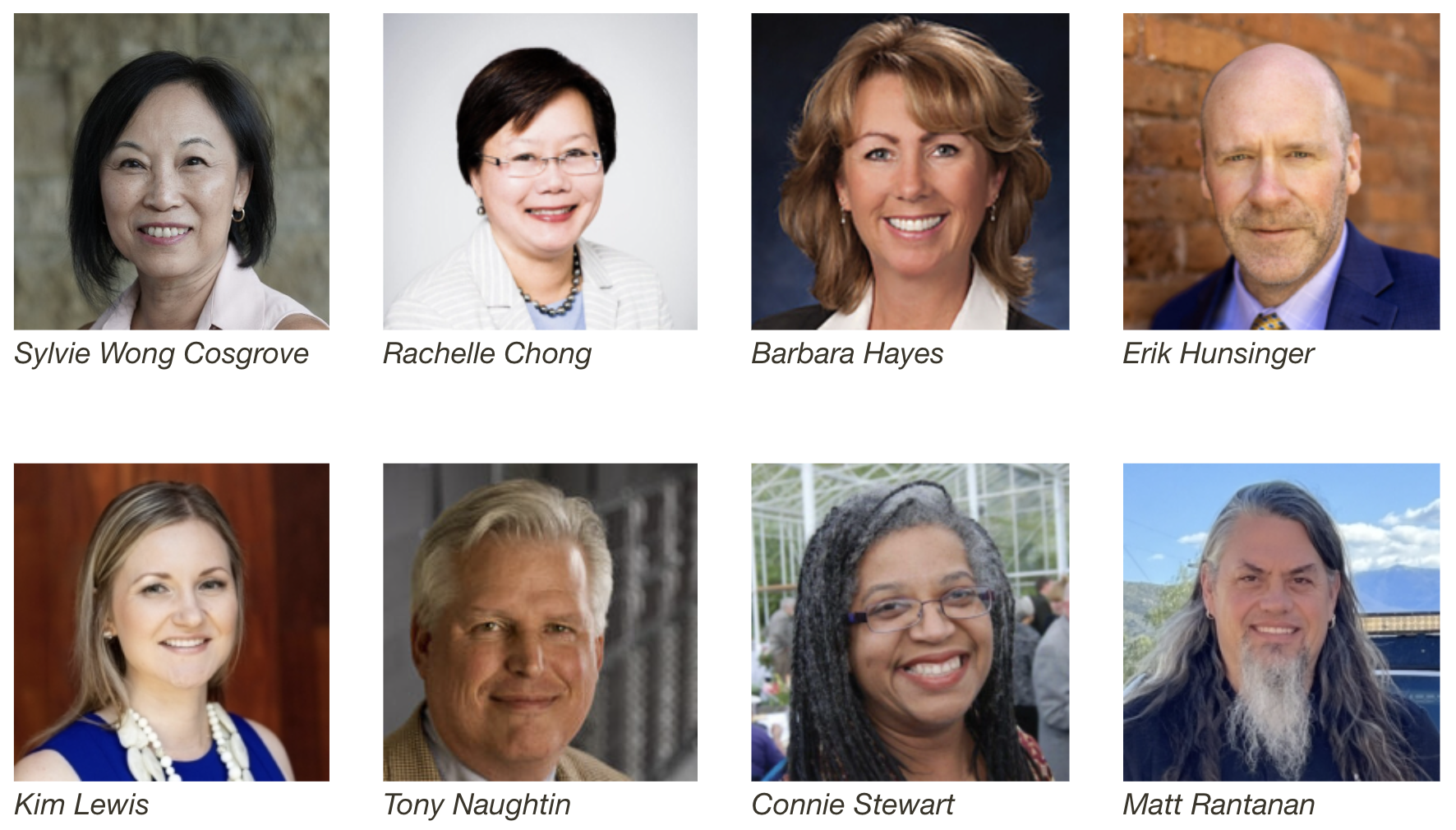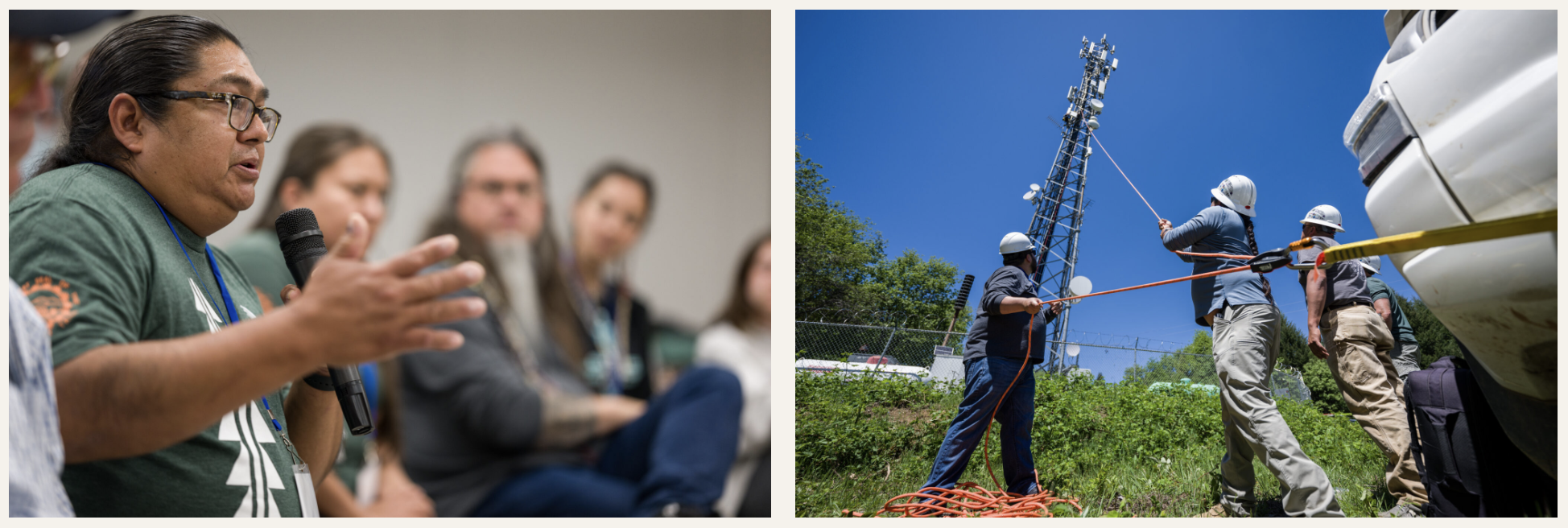- About
- Network
- Community
- Initiatives
- News
- Events
- Blog
- Publications

Connecting California: Exploring the State of Middle- and Last-mile Broadband Funding
Categories Equity & Access
Tags conference fun

All CENIC member institutions benefit by ensuring that all Californians, no matter where they may be, enjoy the opportunities made possible by broadband availability, access, and adoption.
However, the challenges associated with the work to bring broadband to middle- and last-mile communities can be almost as large as the opportunities broadband offers. Valuable advice to overcome these challenges and make the most of the opportunities was highlighted during a recent panel at CENIC's biennial conference, "The Right Connection," which took place last March in Monterey.
Conversations centered around California’s $6.8 billion digital equity initiative–which includes $3.8 billion for middle-mile communities and $2 billion in last mile grants–that is shaping up 30 months in. Formally known as Senate Bill 156, the legislation awarded historic amounts of money to building out the state’s broadband infrastructure in areas where it is desperately needed.
Panelists discussed the path to building a Network of Trust, continuing to build on funding momentum, and the value of partnerships.
If You Build It, Will They Come?
The discussion began by focusing on building a Network of Trust based on the ideas of sustainability, flexibility, and answering the overall “whys” of broadband. These include why it’s needed, why it benefits communities, and the ways in which advocates can demonstrate how it can be a transformative means of accessing services like healthcare.

From there, the expert panel discussed whether building out the broadband network in underserved communities would translate into more customers signing up for high-speed Internet service.
Connie Stewart, Executive Director of Initiatives at Cal Poly Humboldt, emphasized the importance of having a multi-pronged approach to closing the digital divide.
Stewart, also Chief Policy Advisor for Cal Poly Humboldt's California Center for Rural Policy (CCRP), said one of that organization’s strengths is that it robustly surveys areas and goes door-to-door explaining the importance of broadband to potential customers.
“It’s such a big issue,” Stewart said. “There are so many people who [say], ‘Please build it out to X, and then you beg your provider to build it out to X and no one signs up for service. You can only do that once before that provider doesn't listen to you ever again.”
Another component to successfully building out broadband, she said, is having a competitive market.
“You have to have more than one provider with more than one option in a community, and that's really hard for providers to hear as well,” she said. “It’s just the reality. You want competition.”
Erik Hunsinger, President and Chief Operating Officer of GoldenStateNet, agreed that partnerships are necessary but added that open access is an important component to that.
“You need to have partnerships and entities willing to serve a variety of constituents or last-mile entities in their business model in order to create lower pricing,” he said. “The only way that's accomplished is if you have multiple users on the network.”
The Role of Public-Private Partnerships
The panel delved deeper into how partnerships can help drive broadband progress forward, with one saying: “We’re not going to get this done if we don’t work together.”
Barbara Hayes is Chief Economic Development officer at the Rural County Representatives of California (RCRC). She detailed how the organization will, under the Golden State Connect Authority, be constructing an open-access last-mile municipal network and inviting providers onto it to compete for customers.
Hunsinger said one element of open access is allowing commercial entities to leverage broadband infrastructure. If you have such partnerships as a customer base, he said, it represents a revenue source that could support the overall infrastructure.
“It doesn’t necessarily have to compete with municipally owned and operated networks,” he said. “It can dovetail with those networks as well. Having that approach is pretty important to the overall go-to-market program.”
Matt Rantanen, Senior Advisor of Tribal Broadband with GoldenStateNet, said some Tribes are taking broadband expansion on themselves and finding they can’t build it without a partner.
He said he has been advocating for decades for Tribes working with external partners to ensure that assets built on Tribal land are owned by the Tribe.
“If your federal dollars are [funding] infrastructure on your land but somebody else happens to be building it, that doesn’t mean it’s theirs,” he said. “They’re building it with your dollars, it should be your asset.”

Continuing the Momentum
Rachelle Chong, Commissioner Emerita of the Federal Communications Commission and the California Public Utilities Commission, reviewed both the range of funding opportunities available and the limitations of those state and federal dollars.
Last fall, the application window closed for the $2 billion Federal Funding Account under Senate Bill 156. The funds will be distributed to broadband infrastructure projects to connect unserved Californians. Nearly 485 applications were submitted, with the combined financial ask totaling $4.6 billion.
“[They’re] asking for more than twice what is available,” Chong noted.
She also addressed how federal dollars used to support the cost of Internet service are running out, which will throw an estimated 22 million US residents off the Internet without subsidies. Exacerbating the issue is that with landline use down, traditional telecoms revenues will also fall, making further subsidies less likely.
As funding for broadband begins to dwindle post-pandemic, panelists also discussed how to continue the momentum going forward.
“This is a long-term game we’re playing,” Chong said. “The money we got is definitely not enough, and we’re going to have to continue to advocate for additional funding at the state and federal level to finish off the job.”
Hayes said those who live in communities that lack broadband should demand it.
“Be vociferous in those demands,” she said. “Pay attention, don’t let people get away with not serving your address or your community because it does impact the economic health of that community, in addition to education.”
Offering a different perspective, Stanford University Executive Director of IT Infrastructure Sylvie Cosgrove, also Chair of the CENIC Board of Directors, said she believes the shifting lifestyle patterns brought on by the pandemic will likely grow demand for broadband in middle- and last-mile communities. She noted how scores of workers relocated from high-cost areas to more affordable, remote neighborhoods during COVID thanks to the newfound ability to work from home.
“Those individuals are going to drive economic growth and the development of broadband in those communities that weren’t there before,” she said. “I think the pandemic has changed forever where we’re going to live and work.”
Overcoming Challenges Along the Way
Permitting, right-of-way issues, and the network's sustainability were named as some of the challenges in bringing broadband to remote regions.
Stewart said permitting is still a “major” challenge given the amount of state and federal land in California. She said that has led to difficulty getting people to agree to serve as lead agencies on projects.
“So that means you’re sitting around waiting until you beg one of the agencies to step up to the plate,” she said. “If we had centralized permitting at the state level and the federal level, life would be so much easier to get this money out right now.”
Tony Naughtin, CENIC Senior Advisor, said the biggest hurdle long-term will be the cost of operations and maintenance of the broadband network.
“The network, in the middle-mile sense, needs to be as self-sustaining as possible economically speaking, and pay for its own cost of operation and maintenance, but that is going to be a very significant challenge in the years ahead,” Naughtin said. “I think there’s going to have to be a creative approach. We don’t know all the answers to those questions.”
The entire panel discussion from the conference is also available on YouTube.
Related blog posts
CENIC Members Bolster the Economy by Expanding Digital Literacy in California
Members of CENIC are working to improve digital literacy by supporting initiatives aimed at creating digital access for more Californians and by creating programs to enhance digital literacy once those people have been connected.
Ventura County Library Capitalizes on CENIC Membership to Provide eduroam Connectivity to Student and Faculty Patrons
By becoming eduroam Hotspot Operators, Ventura County Library and its branches offer the extremely valuable service of eduroam connectivity to its student and faculty residents.


